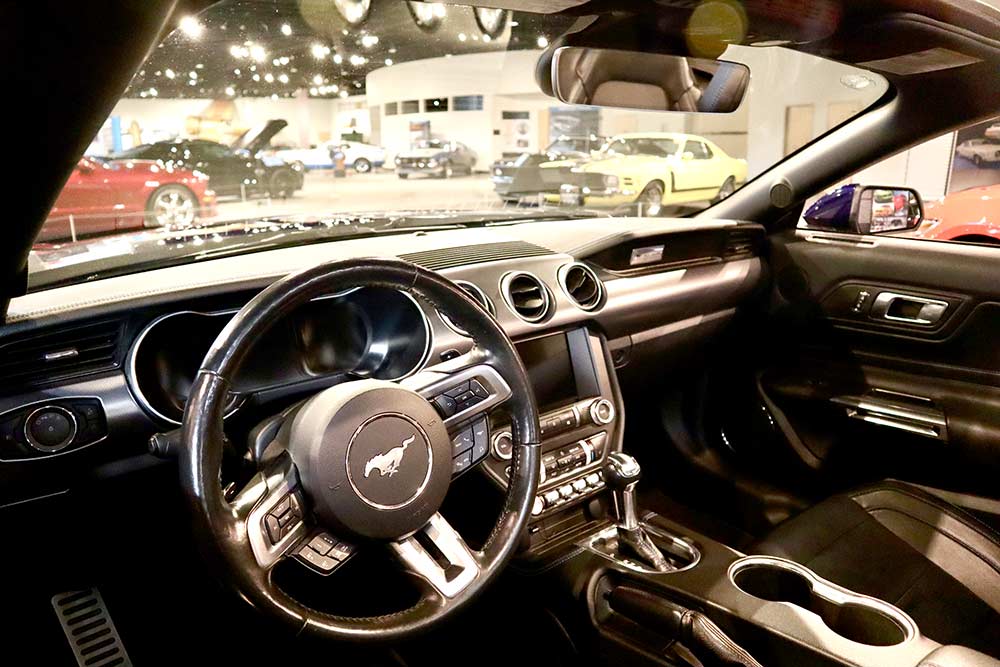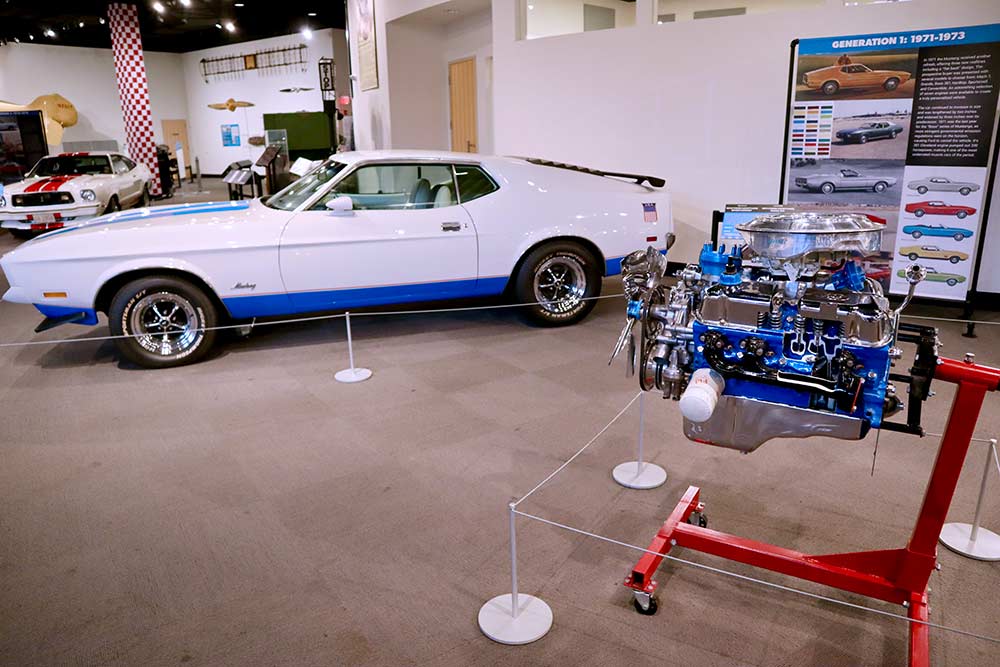Wild Horses: Crawford-Auto Aviation Museum celebrates 60 years of the Ford Mustang
The Crawford-Auto Aviation Museum is celebrating the 60th anniversary of one of America’s most iconic automobiles: the Ford Mustang.
The “Wild Horses: 60 Years of Ford’s Mustang” exhibit features examples of each of the seven generations of the Mustang—from the little coupe launched by Lee Iacocca to the 2024 Dark Horse and its 500-horsepower Coyote V-8 engine.
The “Wild Horses” exhibit opened last week and runs through May 4 at the Crawford, which is housed in Western Reserve Historical Society’s Cleveland History Center in University Circle.
For enthusiasts and casual visitors alike, the exhibit offers a unique opportunity to trace the evolution of an American automotive icon through six decades of continuous production, from its mid-year introduction in 1964 to the latest 2025 model.
 The 1967 Shelby Mustang GT350 (left), built by the late Carroll Shelby. Like the 1967 Mustang SportsRoof (right), the Shelby has a 289 cubic V-8, but performance goodies nearly doubled the price and gave it 166 additional hp. “It's always fun to show super exotic and super expensive cars,” says Larry Davis, Crawford’s Auto Aviation collection manager and exhibit curator.
The 1967 Shelby Mustang GT350 (left), built by the late Carroll Shelby. Like the 1967 Mustang SportsRoof (right), the Shelby has a 289 cubic V-8, but performance goodies nearly doubled the price and gave it 166 additional hp. “It's always fun to show super exotic and super expensive cars,” says Larry Davis, Crawford’s Auto Aviation collection manager and exhibit curator.
Davis, who is also well-known among Mustang enthusiasts for his work as a concours judge with the Mustang Club of America, says any Mustang fan will be captivated by the vintage cars, as well.
“The Mustang has been in continuous production for 60 years, which is remarkable for any American car model,” notes Davis, who owns four vintage Mustangs. “It resonates with people because [many people] would probably be hard pressed to find somebody in their family who has not owned a Mustang over the last 25 or 30 years.”
The Mustang was an immediate hit when it was introduced in April of 1964 as a 1964-1/2 model. Enthusiasts embraced the car’s rear-wheel drive, relatively light weight, seating for four, and the availability of four different engines and three different transmissions in a coupe or convertible.
Ford hoped to sell a quarter-million Mustangs in the first 12 months of production and ended up selling nearly 700,000 in the first 18 months. In total, 10 million Mustangs have been sold—nearly twice as many as Chevrolet’s competing Camaro.
The exhibit occupies the museum's entire upper gallery and also includes early models that showcase dramatic body style changes.
Among the highlights is a rare 1970 Boss 429 Mustang, a survivor car with all original parts, valued at approximately $500,000.
 Bosses were built for racing! The Boss 429 (left) was built to best Chrysler’s hemi-engined cars at the drag strip. The Boss 302 was built for road racing in the Trans-Am American Sedan Championship racing series. “The Boss 429 was built specifically for drag racing and NASCAR,” Davis explains. The exhibit also features four convertibles, with most vehicles sourced from Northeast Ohio collectors.
Bosses were built for racing! The Boss 429 (left) was built to best Chrysler’s hemi-engined cars at the drag strip. The Boss 302 was built for road racing in the Trans-Am American Sedan Championship racing series. “The Boss 429 was built specifically for drag racing and NASCAR,” Davis explains. The exhibit also features four convertibles, with most vehicles sourced from Northeast Ohio collectors.
One local connection to the Mustang is a cutaway of the Cleveland 351 engine on display. “One of the engines that was big for Mustangs was called the Cleveland 351 because it was built here in Cleveland,” explains Davis. “It's really nice, with lots of chrome and paint. It’s good looking.”
Additionally, visitors can view the original die used to create the iconic galloping Mustang logo in 1964, complete with documentation of its development. Davis recalls the story behind how the logo was created:
“The guy who created [the die] went through several generations,” he explains. “One of the fun things about it is originally there were only three legs on the horse. They said, ‘Well, you know, you got to be able to see the edge of the fourth hind leg on the back side of the horse.’ And so if you look closely, you can see that, ‘Oh, yeah, there is the fourth leg there on the backside of the horse.’ [Ford] wanted to make it perfect and truly representative of a Mustang.”
The exhibit's winter timing allows the collectors to share their prized vehicles during the off-season. Davis says he is thankful that the Mustang owners leant the Crawford their cars.
“We’ve got beautiful examples of each generation, from the early cars to the Mustang II and Fox-body cars, to GTs, Shelbys and the 60th anniversary special edition,” he says. “Everybody knows what a Mustang is, and I think we’ve put together an exhibit that people will enjoy and relate to.”










